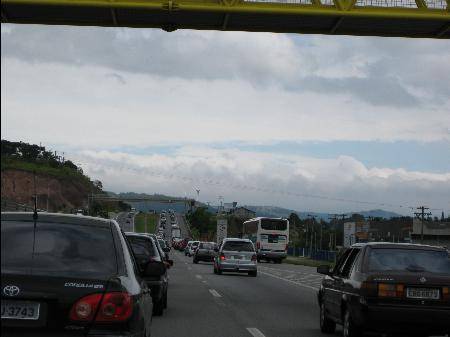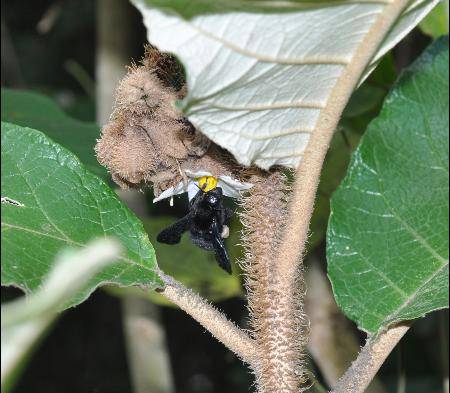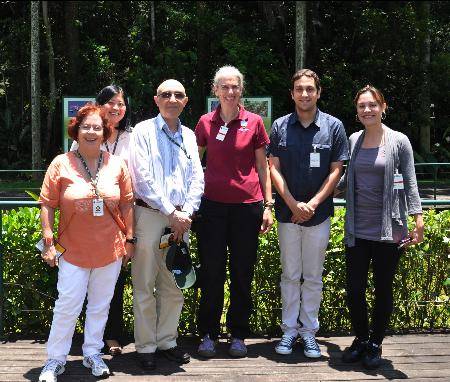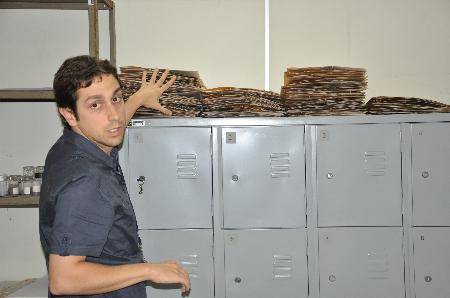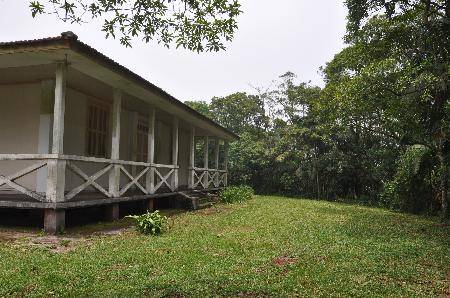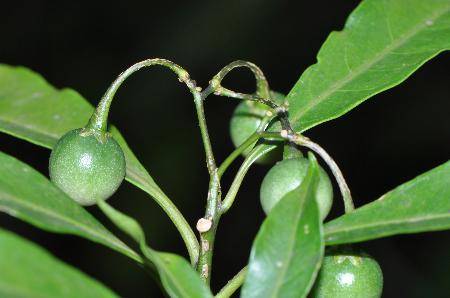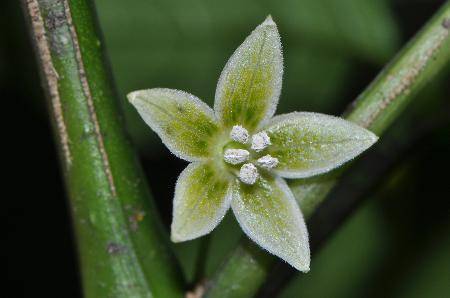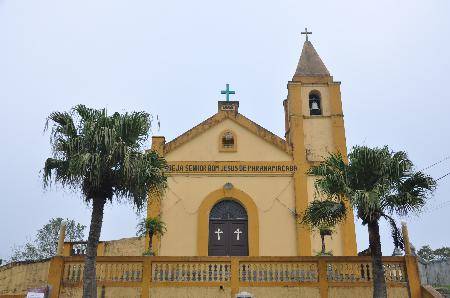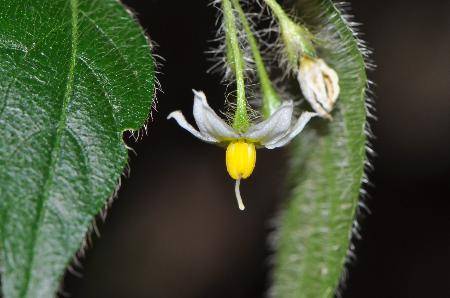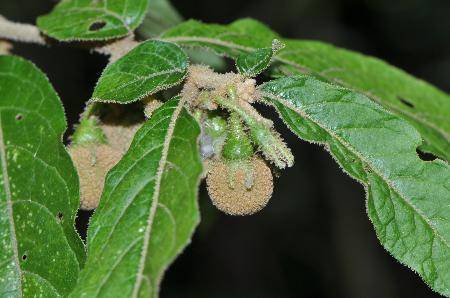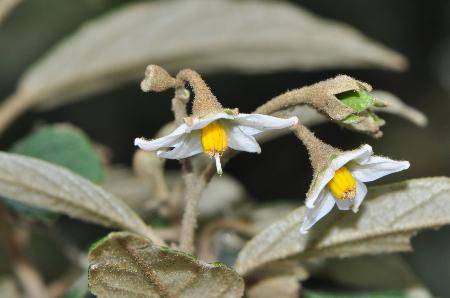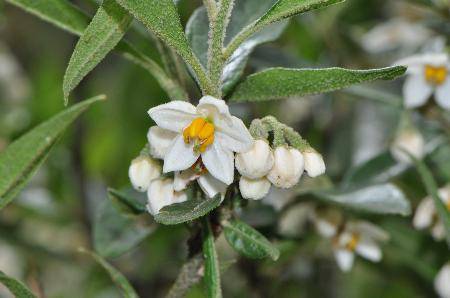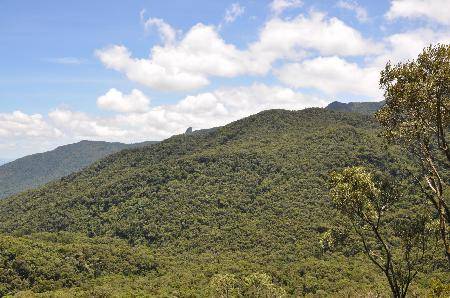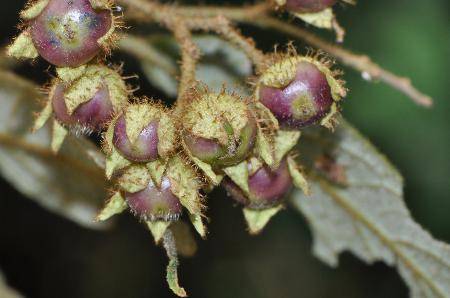Congresso over, samba danced, party enjoyed – we all now head off for fields new. Lynn has gone back to Utah, but Leandro and I, along with Izabella Rodrigues, set off for São Paulo state to look for a putative new species. My colleague Jefferson Prado, with whom I worked on the new International Code of Nomenclature for algae, fungi and plants published in 2012, and his wife Cinthia Kameyama have sorted out permits for collecting in the famous reserve in Paranapiacaba also known as Alto da Serra that is owned and managed by the Instituto de Botânica de São Paulo.
First though we needed to get to São Paulo. Famed for its traffic jams (executives allegedly go everywhere in helicopters to avoid them) we thought that leaving at 6am on Sunday would mean we got there before the rush into town after the weekend. Well, how wrong can you be. We hit the tailback about 2pm, about 75 kilometres outside of the city…and crawled the rest of the way.
Cars, lorries and all sorts - all crazily trying to get into São Paulo… Bumper to bumper for hours and hours. The amazing thing was that people were selling water and sweets along the central reservation of the highway, at incredible risk when the traffic actually did move, but I expect they did pretty good business, otherwise they would have been nuts to be there at all.
We did arrive in the end, getting lost a couple of times, but we got there. Our first day was spent in the herbarium at the Instituto – looking for new localities of the probable newbie and generally identifying plants. My trip here has been paid for by the Virtual Herbarium of Brazil partnership – and in exchange my job is to identify as many herbarium specimens as I can, thus helping with the quality of information available from the consortium.
We got a taxi from the hotel to the institute – no way was Leandro driving in that traffic any more than he had to! Our driver was chatty as can be, and took us to the wrong place at first. But rather than complain and blame us, he quite amazingly took us back to the hotel, set the meter to zero and we began again. Can you imagine that happening anywhere else on Earth? All the while keeping up a constant monologue on politics, life in São Paulo and things in general, including the World Cup (to be hosted by Brazil in 2014, with one of the main venues in São Paulo).
He dropped us at the entrance and we walked through the botanical gardens to the herbarium. It took us ages as the road was lined with solanums… Including the amazing, altogether wonderful Solanum castaneum – the ultimate Bob Marley plant, I swear this one has dreadlocks!
We saw a huge black Bombus species buzz-pollinating the flowers – these are Leandro’s thesis topic, so he was pretty excited to see them in a place he hadn’t expected them to be so common!
So the herbarium. The institute in São Paulo is one of the larger and older herbaria in Brazil and so there were a lot of plants waiting for us to name… between us Leandro and I identified some 500 specimens, including many of the new species. In 2008 I had tentatively identified three specimens of a plant from the mountains of coastal São Paulo as Solanum evonymoides – a species we had collected in Bahia, but with reservations. The amount of material in São Paulo convinced me that the plant is indeed completely different to S. evonymoides – what an idiot for not realising it earlier! But this is the beauty of visiting other collections, with little evidence to go on one cannot make a decision – the evidence is there in the collections, and they are so, so valuable – all of them, big and small alike.
Lunch in the botanical garden with (L-R) Maria Candida Mamede (curator of the herbarium), Cinthia, Jefferson, me, Leandro and Izabella.
Leandro counting some of our identifications for the final report from my trip… we basically just counted the piles and multiplied!
Bright and early we set off for Paranapiacaba – about an hour towards the coast in the Serra do Mar, the coastal range that rises to almost 2,000 metres above sea level between the city of São Paulo and the ocean. The town of Paranapiacaba was built by the British who came to construct the São Paulo railway, and the reserve managed by the institute was established in 1909, making it the oldest protected area in Brazil. The famous British botanical artist Margaret Mee spent time at the reserve, mostly painting bromeliads – she stayed in the lovely little house on the top of the hill that has housed scientific visitors for decades.
The Casa de Naturalista is idyllic – I wished we didn’t have to push on to get to our next Solanum-hunting spot…
One the path up the hill we saw Solanaceae galore – Izabella’s genus Aureliana was common, there were lovely little peppers, and Solanum castaneum for Leandro. Izabella, in her quiet understated way, mentioned she saw a little green fruit high in the canopy…so up we looked, and there it was – the new species – an 8m tall tree, looking not at all like Solanum evonymoides! For sure, sure, sure something new and different – and extraordinarily, it was quite common. The reserve guards told us that when it was in bloom it was incredibly sweet-smelling and perfumed the whole forest – everyone had just thought it was a common species in the same group (the one I did my PhD thesis on, section Geminata) called Solanum pseudoquina, and not bothered to collect it up there in the canopy…
Doesn’t look like much, but I was pretty excited! The branches have an odd (for Solanum) whorled structure, so we might just call it Solanum verticillatum – the leaves are leathery and shiny – it really is a pretty plant.
Izabella studies the Brazilian almost-endemic genus Aureliana - of the 13 species, 12 occur only in Brazil! This one is the common but incredibly confusing Aureliana fasciculata - Bella had to do oa lot of statistical analyses to work out the limits of this species for her PhD thesis - she is now doing a post-doc studying the pollination biology of these discrete forest plants.
The town of Paranapicacaba was the hub of the São Paulo railway, taking goods from inland to the port – the Serra do Mar is so steep that a cog railway had to take things down the last slope to the sea. This is now a touristic region for Paulistas…
We would have loved to stay for ages in the reserve, or in the little town of Paranapiacaba – but on we needed to go. Firstly to get to our next destination, and secondly to miss the São Paulo traffic out of town! So we delivered Cinthia to the institute, and set on our way… We were aiming to get to the Rio de Janeiro, Minas Gerais, São Paulo state border to be able to spend the whole day photographing plants in the national park of Itatiaia, where several really interesting endemics occur.
We made it to the town of Queluz for the night, only a few kilometres from the turnoff to the park. Unfortunately, we missed the turnoff the next morning and ended up driving about 40 kilometres extra and having to pay a toll twice (about £10) because there was no escape from the toll road! Very annoying – but we had gone far enough so we didn’t lose much time.
The Serra da Mantiqueira is an ancient mountain range that rises to more than 2,000 metres above sea level, and the area around the tri-state border is protected and highly forested. We did not have a permit for collection in the park, so we went with our cameras instead – Leandro and Izabella had collected here many times before, so we were there to get good pictures of these rare plants, not really to collect specimens.
The area is a paradise for Solanaceae – they were all around us in all their amazing variety … Here are a few of the stars of the day:
A new species Leandro will name to honour Alexandre Curt Brade, one of the great botanists of Brazil in the early 20th century.
The extraordinary Solanum gnaphalocarpon with densely hairy fruits – I thought this was only found in dry areas, but as is so often the case – I was wrong!
Solanum itatiaiae – only known from high elevations in this region, growing near a bridge at about 2,000m.
Solanum cassioides – disjunct from populations in southeastern Brazil, this species has a foothold here at high elevation where it gets really cold…
The view across the mountains from the road was spectacular – this is very large piece of well-protected forest, and harbours many exciting plants!
And finally, from lower down, the almost unbelievable Solanum lacerdae – the hairs on the calyx are like little stars on stalks, bizarre but for real!
In the afternoon the thunder and lightning began – and the car developed an odd squeal… so down we went, well satisfied with our day of photography. We planned to stop in the touristic town of Caxambu – with hot springs and thermal baths – before heading back to Belo Horizonte. Too bad I forgot my swimming costume! And this was a staid, turn-of-the-century family resort town, not a place for skinny dipping… So we just slept…
Next day – Belo Horizonte again – all set for a few days intensive work in the herbarium before heading home. I need to do so much – annotate and identify specimens, describe the new species, work out some real taxonomic problems with Leandro and João… will I manage it all? I hope so – the plane home looms…



